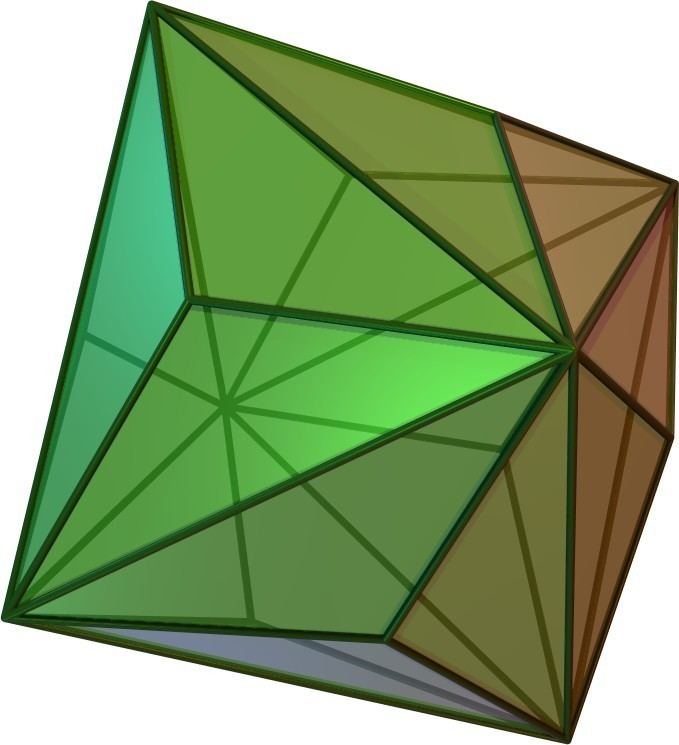 | ||
In geometry, a triakis octahedron (or kisoctahedron) is an Archimedean dual solid, or a Catalan solid. Its dual is the truncated cube.
Contents
It can be seen as an octahedron with triangular pyramids added to each face; that is, it is the Kleetope of the octahedron. It is also sometimes called a trisoctahedron, or, more fully, trigonal trisoctahedron. Both names reflect the fact that it has three triangular faces for every face of an octahedron. The tetragonal trisoctahedron is another name for the deltoidal icositetrahedron, a different polyhedron with three quadrilateral faces for every face of an octahedron.
This convex polyhedron is topologically similar to the concave stellated octahedron. They have the same face connectivity, but the vertices are in different relative distances from the center.
If its shorter edges have length 1, its surface area and volume are:
Orthogonal projections
The triakis octahedron has three symmetry positions, two located on vertices, and one mid-edge:
Related polyhedra
The triakis octahedron is one of a family of duals to the uniform polyhedra related to the cube and regular octahedron.
The triakis octahedron is a part of a sequence of polyhedra and tilings, extending into the hyperbolic plane. These face-transitive figures have (*n32) reflectional symmetry.
The triakis octahedron is also a part of a sequence of polyhedra and tilings, extending into the hyperbolic plane. These face-transitive figures have (*n42) reflectional symmetry.
